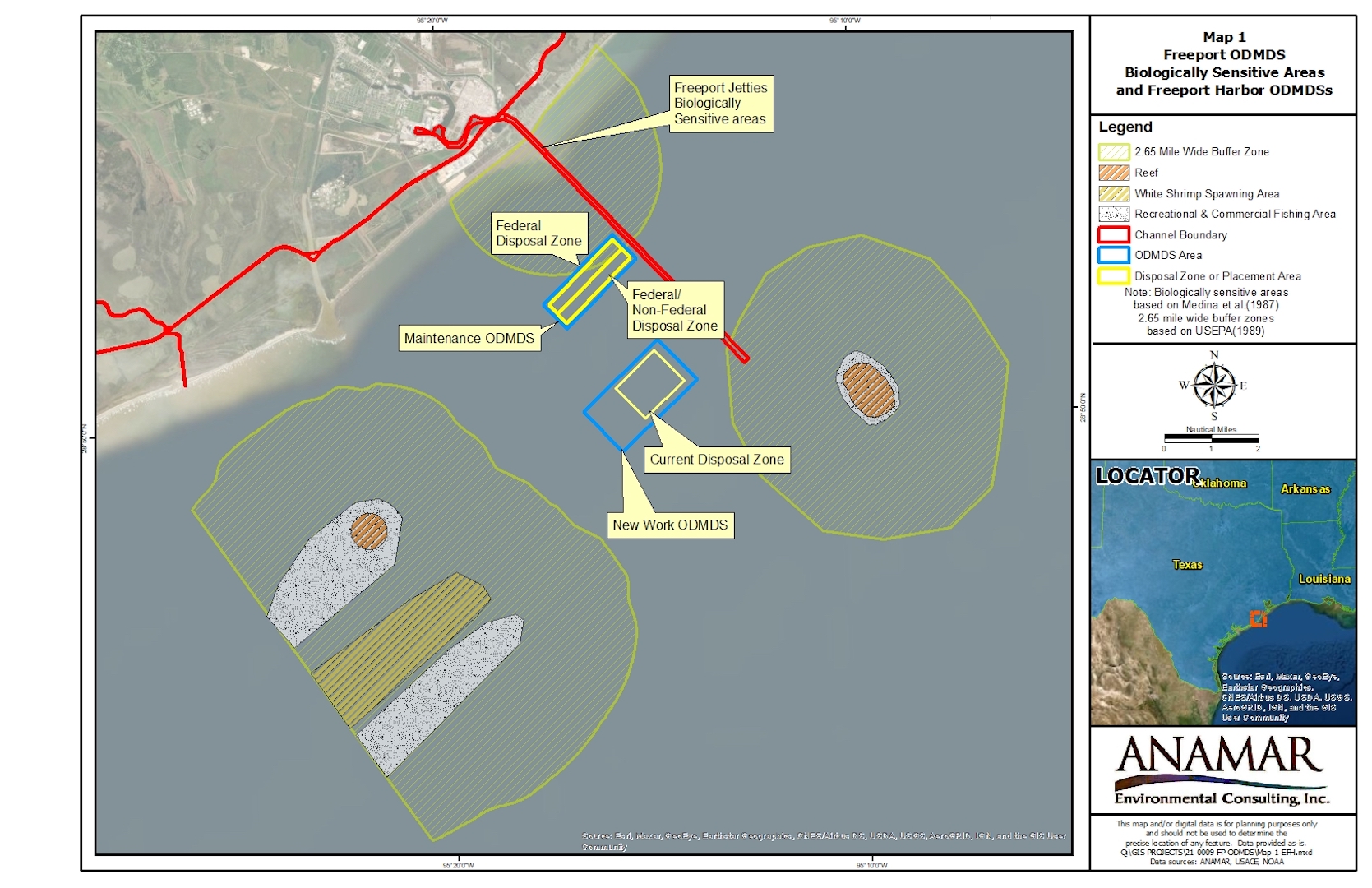ANAMAR was contracted by HDR to research and predict the possible effects of reconfiguration of the existing disposal zone at the Freeport Harbor New Work Ocean Dredged Material Disposal Site (ODMDS) on nearby sensitive aquatic resources.

Project Statute
- MPRSA Section 102
In order to evaluate the sensitivity of species in the proposed disposal zone, ANAMAR reviewed and summarized available data relevant to the proposed reconfiguration. These data were focused on known characteristics of the ODMDS, the results of previous surveys, biologically sensitive resources identified off Freeport (e.g., reefs, fishing areas, white shrimp spawning sites), regional data on fisheries independent monitoring and commercial and recreational fisheries catches, endangered aquatic species and critical habitat, marine mammals, and Essential Fish Habitat.
ANAMAR generated sediment transport modeling results using the Short-Term Fate of Dredged Material (STFATE) model to help predict possible effects to sensitive aquatic resources from the proposed reconfiguration of the disposal zone to 2.1 square nautical miles (79% of the total area of the ODMDS). The STFATE parameters were expanded to allow predictions of effects down current of the ODMDS. Various disposal scenarios were modeled using 4-hour and 24-hour durations, currents of 0.5 knots (surface) and 0.25 knots (near-bottom), and hopper and mechanical dredging methods. The results were discussed in a technical report provided to HDR and USACE. The results of the study suggest that the proposed reconfiguration of the disposal zone satisfies Marine Protection Research and Sanctuaries Act (MPRSA) Section 102(c)(3)(D) requirements. Based on the information and conclusions provided in the report, EPA agreed to allow the reconfiguration of the disposal zone within the ODMDS. This reconfiguration provided the increased capacity necessary to meet federal and private users’ sediment management needs.